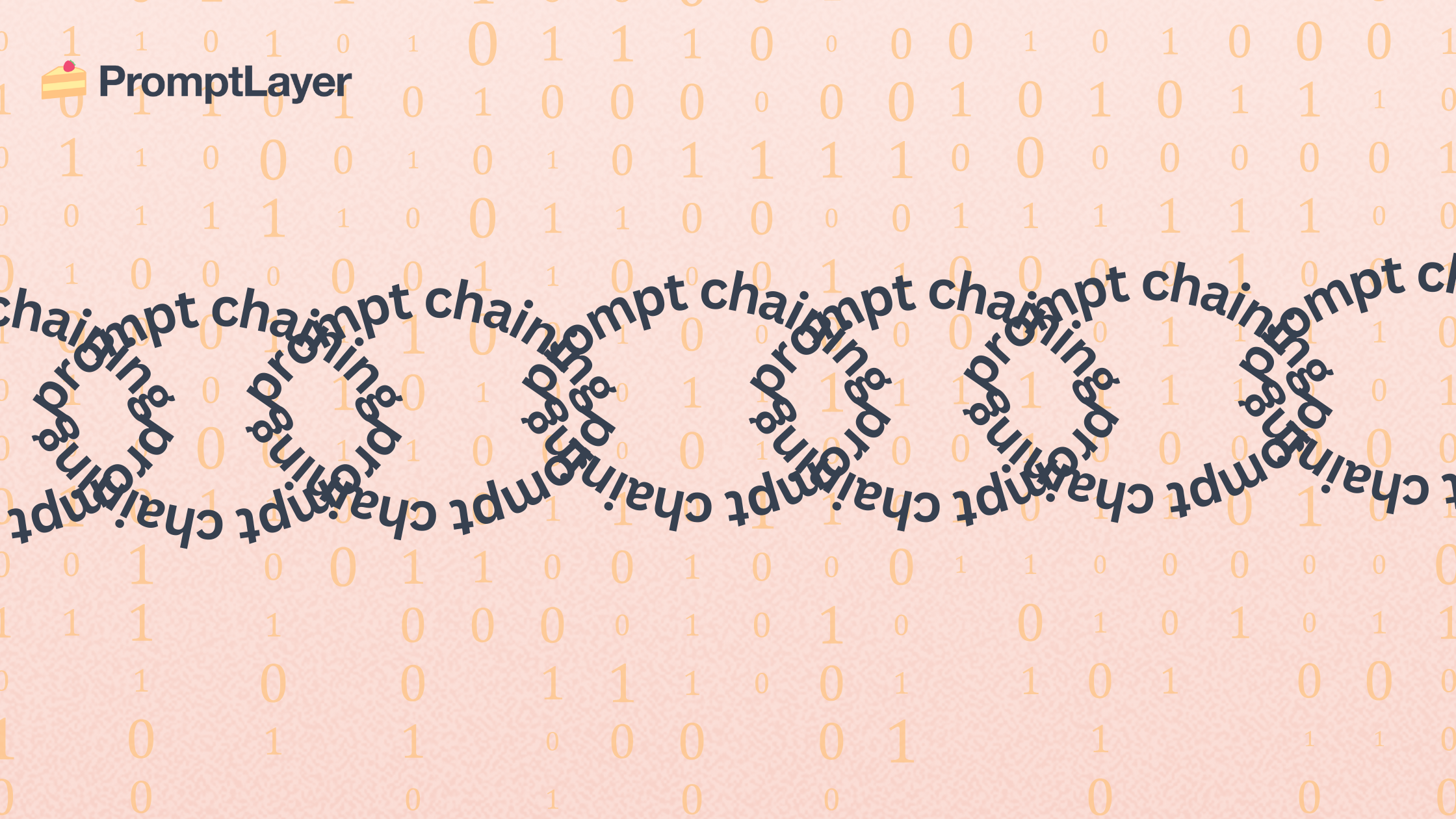What is Prompt Chaining? A Complete Guide to LLM Chaining

Prompt chaining is an AI technique that enhances the capabilities of large language models (LLMs). It involves breaking down a complex task into a series of interconnected prompts, where the output of one prompt becomes the input for the next. This structured approach guides the LLM through a more nuanced reasoning process, leading to more accurate and comprehensive results.
What is Prompt Chaining?
Prompt chaining leverages the power of LLMs by creating a sequence of interconnected prompts. Instead of presenting a single, complex prompt, the task is divided into smaller, more manageable steps. Each step's output feeds into the next, forming a chain that leads the LLM to the desired outcome.
Why is Prompt Chaining Important?
LLMs, while revolutionary, have limitations. Their context length restricts the amount of information processed in a single prompt, hindering complex task handling. Prompt chaining overcomes this by segmenting the task into smaller, digestible pieces.
Context hallucination, where the model generates outputs inconsistent with the given context, is another challenge. Prompt chaining mitigates this by maintaining context throughout the chain, guiding the LLM and reducing hallucinations.
Finally, prompt chaining simplifies fault analysis by isolating the problem into multiple sections, making it easier to pinpoint and rectify errors in the reasoning process, resulting in more reliable LLM applications.
How Does Prompt Chaining Work?
Prompt chaining systematically guides an LLM through a series of prompts. It begins with an initial prompt establishing context and providing the first instruction. The subsequent prompts use the output of the previous ones as input, forming a chain leading to the desired result.
Types of Prompt Chains
- Linear Chains: Prompts follow a sequential order, each building upon the previous one. Suitable for tasks requiring a step-by-step approach, like summarizing a document or generating code.
- Branching Chains: Incorporate conditional logic. The next prompt depends on the previous prompt's output. Useful for tasks with varying decision paths, such as customer service or scenario-based problem-solving.
- Recursive Chains: Repeat a set of prompts until a condition is met. Helpful for tasks requiring iterative refinement, like creative writing or data analysis.
Implementing Prompt Chaining
- Identify Subtasks: Deconstruct the complex task into smaller, manageable subtasks.
- Design Prompts: Craft clear and concise prompts for each subtask.
- Chain the Prompts: Link prompts logically, ensuring each output feeds into the next input.
- Test and Refine: Evaluate the chain, refining prompts to optimize accuracy and performance.
Advantages of Prompt Chaining
- Improved Accuracy: Focusing on one aspect at a time leads to more accurate and relevant responses.
- Enhanced Control: Greater control over the LLM's reasoning process guides the model towards the desired outcome.
- Increased Transparency: The LLM's decision-making becomes more transparent, clarifying how conclusions are reached.
- Reduced Error Rate: More focused input and context minimize errors in LLM outputs.
Disadvantages of Prompt Chaining
- Increased Complexity: Managing interconnected prompts can be more complex than single prompts.
- Dependency on Initial Prompt: The chain's success relies heavily on the initial prompt's quality.
- Potential for Increased Latency: Multiple API calls can introduce processing delays.
When to Use (and Not Use) Prompt Chaining
Prompt chaining excels in complex tasks broken down into smaller steps, maintaining context over multiple LLM interactions, and verifying responses for correctness. However, it's less suitable for simple tasks where a single prompt suffices or tasks requiring rapid responses due to potential latency from multiple API calls.
Use Cases and Examples
- Content Creation: Generate various content types (articles, blog posts) by chaining prompts for outlining, writing introductions, and elaborating on sections.
- Code Generation: Assist developers by chaining prompts for generating functions, testing, and refactoring.
- Data Analysis: Guide LLMs in data collection, analysis, and interpretation by chaining prompts for analyzing sales data, identifying trends, and predicting future figures.
- Customer Service: Create interactive chatbots handling complex queries by chaining prompts to analyze issues, provide solutions, and draft responses.
Prompt Chaining with PromptLayer
PromptLayer offers a comprehensive platform for implementing prompt chaining, enabling users to visually create, manage, and deploy complex workflows involving Large Language Models (LLMs). This approach allows for the breakdown of intricate tasks into a series of interconnected steps, enhancing the AI's ability to handle sophisticated problems effectively.
Key Features of PromptLayer's Prompt Chaining:
- Visual Workflow Builder: Design prompt chains through an intuitive interface, facilitating collaboration among team members, including non-technical stakeholders.
- Version Control: Maintain a history of workflow iterations, enabling users to track changes and revert to previous versions as needed.
- Interactive Playground: Test workflows dynamically, allowing initiation or termination at any node to assess performance and identify potential improvements.
- A/B Testing: Conduct experiments based on user segments to optimize workflow performance and determine the most effective prompt sequences.
- Release Labels: Manage different environments, such as production and development, directly through the dashboard without requiring code changes.
- Parallelized Execution: Automatically parallelize workflows to enhance performance and reduce latency.
- Chain Comparison: Analyze and compare the performance of various prompt chains, both simple and complex, to identify the most efficient configurations.
PromptLayer streamlines the development and deployment of prompt chains, facilitating more controlled and detailed interactions with AI models.
Conclusion
Prompt chaining is a valuable technique that amplifies LLM capabilities and enables the creation of more sophisticated AI applications. By segmenting complex tasks and maintaining context, it elevates accuracy, control, and transparency in LLM interactions. While some limitations exist, its benefits position it as a crucial tool for developers and researchers across various domains. As LLMs advance, prompt chaining will likely play an even greater role in shaping the future of AI.
About PromptLayer
PromptLayer is a prompt management system that helps you iterate on prompts faster — further speeding up the development cycle! Use their prompt CMS to update a prompt, run evaluations, and deploy it to production in minutes. Check them out here. 🍰



